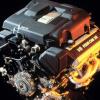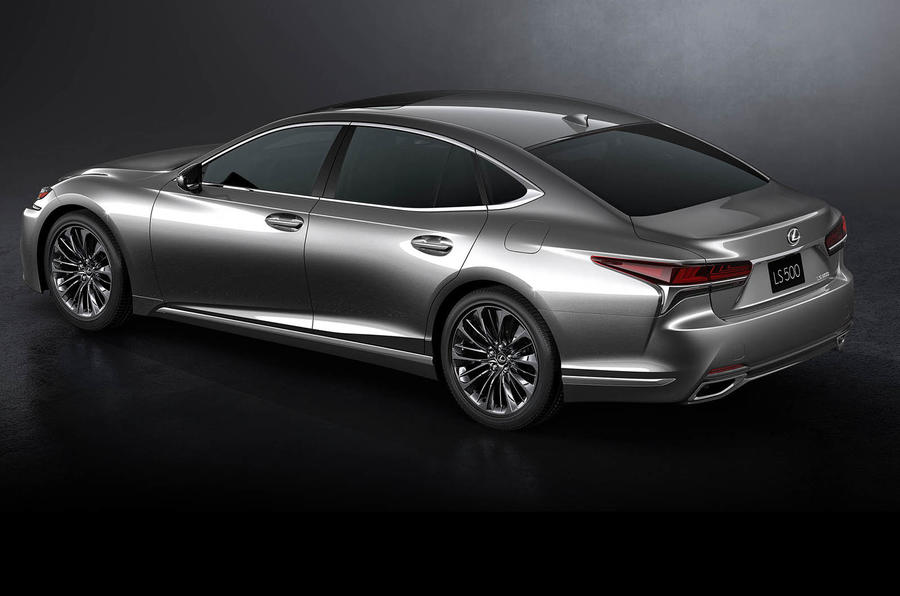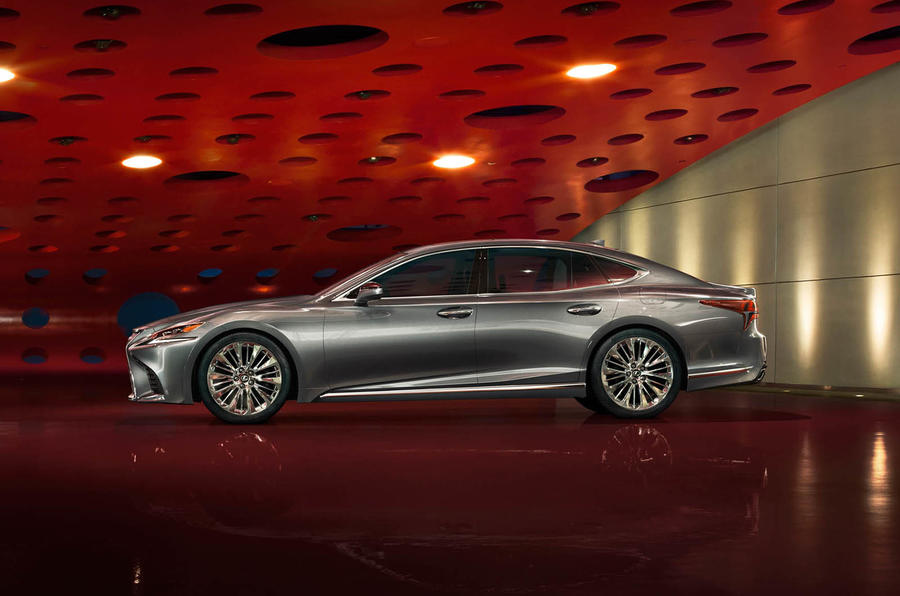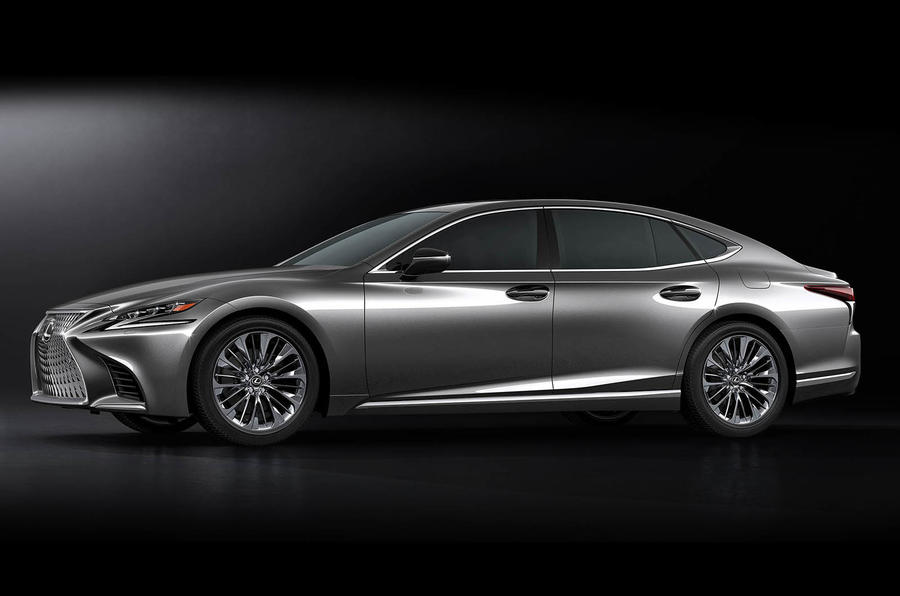-
Posts
132 -
Joined
Content Type
Profiles
Forums
Events
Store
Gallery
Tutorials
Lexus Owners Club
Gold Membership Discounts
Lexus Owners Club Video
News & Articles
Everything posted by plexus914
-

Brembo Pads
plexus914 replied to dendonc's topic in LS 400 / Lexus LS 430 / Lexus LS 460 / Lexus 600h / Lexus 500h Club
Brembo pads have very good braking power, but make lot of black dust. Better you go with ceramic pads (like the original equipment pads), but they will need more time to build up to the full braking power (about 200miles). From experience I can recommend: High performance - AKEBONO ACT665 - ProAct Ultra Premium - ceramic - little dust Daily Driver - BOSCH BC665 - Premium QuietCast - ceramic - little dust -
Do not use copper grease! As mentioned earlier it will dry out. You gonna need some synthetic high temp grease. Toyota disc brake shim grease ....synthetic high temp grease (colourless and very sticky): 08887-80609 ....................best stuff ever but very expensive (40gr for about 40€) Alternative: ATE Plastilube (-45°C to +180°C) is not enough for front brake !!! PERMATEX 24125 Ceramic Extreme' brake parts lubricant (100% synthetic -46°C to +1649°C) Liqui Moly Brake Grease .....................................................(semi-synthetic..-40 to +1400°C) or GRANVILLE Ceramic Brake Grease ..............................................(-40°C to +1200°C)
-
Keep in mind, when disconnecting starter battery or deleting diagnostic trouble codes (DTC's) ECM/ECU will reset to factory default. To get all the engine's power back ECU needs some time to adjust again and a run on the motorway with some nice KICK DOWNS will help. "Resetting the ECU" is the process of clearing all the long term memory from the ECU's memory. These variables trim idle speed, fuel, spark, and more. The ECU will also store trouble codes for diagnostic capability. By resetting the ECU, the trim values will be set to some neutral default value and all of the trouble codes will be cleared. I reset the ECU, and now the car runs rough! Why? The engine may run rough or idle poorly right after ECU reset. The ECU now has default numbers in its trim memory - it has to adjust them to match the tune of your engine and its sensors and actuators. It might take a day or two of driving in traffic before the engine will settle down again. Now you know why the ECU remembers these values in the first place!" PS: Regarding fuel consumption winter tires driven in temperatures above 7 degrees won't do any good either.
-
Just an idea.... old and leaking ECU capacitors might be the culprit. Common problem with the LS400. ● Lexus LS400 - 1990-2000 (in 1997 and earlier models, the problem is extremely common) http://www.clublexus.com/forums/ls-1st-and-2nd-gen-1990-2000/656360-all-my-crazy-lexus-issues-solved-ecu-leaking-capacitor.html SYMPTOMS: Please understand that any one of these symptoms can be a sign of ECU capacitors beginning to fail. - You do not need all or most of them to have this issue! Your ECU capacitors are strongly suspected if you have at least one of the following intermittent issues on your Lexus or Toyota: ● problems in getting into diagnostic mode or scanner says "no communication" ● random dropping into "limp home" mode ● weird shifting problems ● OBD port is unresponsive, seems dead ● throwing random fault codes ● engine won't rev out/rev limits at 2000 or less rpm ● engine runs like crap, then suddenly runs fine again ● random not starting or cutting out ● low idle or erratic idle ● often very hard to start, requires starting fluid ● transmission will not automatically shift, only manual shift is possible ● transmission jerks from 1st to 2nd gear, and kinda slips from 2nd to 3rd ● no A/C compressor operation ● idle speed rolling up and down, or sometimes too low and sometimes too high ● speedometer not working reliably ● speed (cruise) control not working ● tachometer not working sometimes ● air bag light flickering intermittently ● A/C going into reset with flashing front defog light (front defog light typically flashing 10 times) ● check engine light on sometimes, but no codes stored, often in concert with ECT light ● ECU not communicating with scanners or not displaying codes with jumper installed ● bad sulfur exhaust smell in concert with not running right above But before that, diagnose faulty parts and get rid of those OBD-trouble codes you have already stored. 21 - main O2 sensor & heater signal 27 - sub O2 sensor signal 28 - main O2 sensor 29 - sub O2 sensor 31 - air flow meter signal 71 - EGR system malfunction
-

New LS
plexus914 replied to Jamesf1's topic in LS 400 / Lexus LS 430 / Lexus LS 460 / Lexus 600h / Lexus 500h Club
-
Before you measure any rest current your car has to get into "sleep mode". Keep in mind that in order for the car to sleep at all, it must be off and nothing can be "touched" (no opening of the trunk or doors, no pressing any buttons on the key fob, etc.) If something is touched, the timer starts all over again. How long it takes for it "to go to sleep" I am not quite sure, but 30 minutes should be enough and rest current should be under 0,05Amps (50mA) For comparison my 1997 LS400 has a rest current of 24,8mA. Alarm went off at about 11,82Volts. Batterie should be charged when less than 12,4Volts (75%). Procedure of how I did it and got a reading of 24,8mA: - Turn ignition off and pull the key - Open engine bonnet and close its lock with a screwdriver - Close all doors - leave the battery connected and arm the anti theft deterrent system either by key or by key fob.....and check security lamp if it works - to be sure leave the car alone for about 30 - 60 minutes (I went back to the car after about one hour) - go back to the car's battery and measure rest current without interrupting the current. Before disconnecting the battery put the pair of test leads (black one/-)to the negative battery terminal and the other (red one/+/amps or mA) to the negative terminal clamp.......now disconnect carefully terminal and clamp.
-
Hi, any news or recommendations in regards of all season tires in 2016 for LS400? One set of these would be my choice but can't decide: Vredestein Quatrac 5 - 225/55 R17 101Y XL (B/C/70) HANKOOK KINERGY 4S H740 - 225/55 R17 101V (E/C/72) Nokian WeatherProof - 225/55 R17 97V (C/A/69) Goodyear Vector 4Seasons Gen2 - 225/55 R17 97V (B/B/69) Falken Euro All Season AS200 XL - 225/55 R17 101V -XL- (F/C/73)
-

Two Problems
plexus914 replied to SHELLDRAKE's topic in LS 400 / Lexus LS 430 / Lexus LS 460 / Lexus 600h / Lexus 500h Club
On/off knob lights up again. I changed the soldered in micro bulb. 8V / 0,06A / 0,5watt / bulb head is about 3mm x 5mm Cheap ones from Fleabay work just fine: 5 - 12 V / 0,1 A / 3mm x 7mm -
Replace shims only when broken. If they are not damaged clean the shims properly and put some synthetic brake shim grease on. (Toyota brake shim grease - black: 08887-80409) or (Toyota brake shim grease - white: 08887-80609 ....it's expensive but this stuff sticks like hell) 1997 LEXUS LS400 (RM514U) BR-36 REAR BRAKE CALIPER COMPONENTS.pdf
-

Still no Audio
plexus914 replied to oldhazey's topic in LS 400 / Lexus LS 430 / Lexus LS 460 / Lexus 600h / Lexus 500h Club
Maybe this will be of any help!? 1996 - radio player connectors.pdf -
Differences between MK3 and MK4 (US-market!): 1995 - Introduction of the completely redesigned Second Generation LS400 Series III. - Basically the second gen LS is bigger, slightly more powerful, and a new design all around. Since it was completely redesigned pretty much everything looks different on both the interior and exterior. Take a look at the pictures above to note these changes. I will list some less visible differences below.... - The 1UZ-FE engine was improved in several areas. Headers were changed from the single type to semi-dual type for better exhaust flow. - Bigger and better brakes. The front brakes were changed from a single-sided 2-piston type to an opposed-cylinder 4-piston type. - A few suspension improvements. - LS400 emblem added to the trunk. - Body is more rigid and made of anti-corrosion steel. - More sound deadening to further reduce engine and road noise. - The power tilt and power telescopic steering column became standard. - 4-headlight system. - Light auto turn-off system now standard. - Automatic light control system became standard. - Headlight cleaner became standard on Canadian models. - Vehicle-speed sensing control was added to the intermittent wiper with an adjustable time function. - 3-jet type windshield washer nozzles. - A one-touch slide-open function was added to the moonroof (optional) and the tilt-up reminder function was discontinued. - A windshield heater became standard for Canadian models. - Dual airbags became standard. - Space for a portable first-aid kit designed into the driver's side front seat. - Rear armrest now equipped with a push-open type cup holder. - A 3-point seat belt for the rear center seat was added for the first time on a Lexus. - A front passenger side temperature control switch was added to offer dual front climate zones for better control. - The electronic odometer was moved to the bottom center of the instrument cluster and the warning lights were lined up in a straight line on the bottom of the cluster. The temperature gauge is now separate and not in the instrument cluster. - The optional CD changer was now mounted into the upper glove box. - A trunk lid opener button and panic button were added to the wireless door lock system remote. - And more... - Top speed = 149 mph; 0-60 = 7.7 seconds; 0-400m = 15.2 seconds. 1996 - Basically there were no changes. 1996 LS400's are virtually the same as 1995 LS400's. - A diagnosis function was added for the evaporative emission control system. - Slight change in the cruise control system. - Top speed = 149 mph; 0-60 = ? seconds; 0-400m = 15.2 seconds. 1997 - Lexus and Coach, the renowned manufacturer of distinguished leather products, announce the production of a distinctive limited edition LS400 sedan. - A power outlet was added in the lower center console box to enable accessories like a cell phone. - The engine control system was partially changed. - An engine immobilizer was added to improve the vehicle's theft prevention performance. - ABS and TRAC actuators were changed. - Reinforcements were added around the cabin to improve body rigidity. - Air conditioning system slightly refined. - SRS front side airbags were added into the front seatbacks. - Top speed = 149 mph; 0-60 = 7.7 seconds; 0-400m = 15.2 seconds. 1998 - The LS400 Series IV debuts with many improvements. - Redesigned front end. Changes to the hood, fenders, grille, front bumper, and front lights. - Discharge headlight became standard equipment on Canadian models and optional equipment for US models. - Slightly refined rear lights. - Outer rearview mirror was changed to reduce wind noise. - Wheels were redesigned and now have 5 spokes. - A retractable headrest was added to the rear center seat. - Another rear personal light was added to the rear quarter pillar area. - A leather & wood steering wheel and wood shifter were introduced as optional equipment. - VVT-i (variable valve timing-intelligent) system and the ACIS (acoustic control induction system) was adopted in the 1UZ-FE engine to improve fuel economy, improve performance, and reduce emissions. ETCS-i (electronic throttle control system) was also added to ensure excellent controllability of the vehicle and improve its comfort. Worlds first production V8 engine with VVT-i. - 290 hp @ 6000 rpm and 300 ft-lbs of torque @ 4000 rpm. - The 4-speed automatic transmission was replaced by a 5-speed transmission. - Propeller shaft was slightly changed. - The differential gear ratio was reduced to improve fuel economy. 2 mounts were used on both the front and rear of the differential to further reduce vibration and noise. - The VSC (Vehicle Skid Control) system was added. - Suspension and brakes slightly revised. - The hydraulic circuit of the power steering system changed. - More work on the body and sound dampening material to further reduce vibration and noise. - An automatic headlight beam level control system was added to models with HID headlights. - A headlight off delay system was added to keep the headlights on for a set period of time after occupants exit the car. - A multi-information display was added to the instrument cluster to display vehicle data and warnings. The design of the shift indicator was changed. - An automatic recirculation system was added to automatically switch the air inlet mode in accordance with the level of concentration of harmful elements in the air. - An all-door one-touch auto up and down function was added. - A jam protection function was added to prevent a person's hand or other object from becoming caught in the door window. - A function to operate all windows was added to the door lock remote control. - Changes were made to the engine immobiliser system. The starter cutoff function was discontinued. The theft deterrent system was slightly changed. - The construction and operation of the inflator for the front passenger air bag was changed. - A garage door opener was added to the map lamp area. - A seat belt warning for the front passenger was added. The display method for the seat belt warning system changed from the illumination type to the flashing type. - A navigation system was offered for the first time as an option. - Some changes to the audio system. A diversity rear window imprinted antenna system started to be used. - Top speed = 149 mph; 0-60 = 6.3 seconds; 0-400m = 14.9 seconds. 1999 - The wood shift knob became standard equipment. - A few engine refinements. - Steering column was slightly refined. - The daytime running light system became standard equipment. This is basically the same system the Canadian models had been using for years. - A blank mode was added for the instrument cluster where no cruise information appears. - A change was made to the reverse shift function linked to the outer rear view mirrors. - Top speed = 149 mph; 0-60 = 6.3 seconds; 0-400m = 14.9 seconds. 2000 - Three tether anchor brackets for mounting the CRS (child restraint system) are provided. - ORVR (on-board refueling vapor recovery) system was added to the engine. - A brake assist system was added to ensure for enough braking force in emergencies. - The seat memory system was slightly changed. - Top speed = 149 mph; 0-60 = 6.3 seconds; 0-400m = 14.9 seconds.
-

vandalised
plexus914 replied to harrylime's topic in LS 400 / Lexus LS 430 / Lexus LS 460 / Lexus 600h / Lexus 500h Club
Get some acrylic thinner. -

Ls400 Alloys
plexus914 replied to Chasdad's topic in LS 400 / Lexus LS 430 / Lexus LS 460 / Lexus 600h / Lexus 500h Club
They were not only for the DHP option available. They have been around as extras since 1995. Modell 1995 - O.Z.Wheel 54007001+ Dunlop SP Sport 2020 E 225/55R17 97W: Radtyp: 54007001 ....produced by O.Z. for Lexus in ??? 17" [8Jx17 H2] the offset is ET40 A DHP equipped car has (as gleaned from elsewhere on this forum) - Spring compression rate +10% - Height -10mm all round - Rear anti roll bar +1mm (thicker that is) to aid turn in - 17 inch O.Z. wheels + Tires Pirelli P Zero 245/50x17 -

Two Problems
plexus914 replied to SHELLDRAKE's topic in LS 400 / Lexus LS 430 / Lexus LS 460 / Lexus 600h / Lexus 500h Club
There are 14 soldered on bulbs for the buttons. 4x3 bulbs and 1x2 bulbs are parallel-connected. In my case it was the one bulb for the on/off knob. PS: Does the bulb from that on/off knob still work on your stereo.......? -
Oops, I did it again...=;o)... I bought some cheap but good quality from China - Renault wheel center cap 54mm - will fit like the original DHP PZ405-F0670 / OZ M514 caps. Size: Surface diameter:54MM-2.13" Clip Diameter:51MM-2.00" Thickness:18MM-0.70" Fit Renault Koleos Logan Fluence Duster Megane Scenic etc To give it a clean surface just get rid of that Renault emblem and close that hole with some heat resistant plastic filler and paint it or make your own design.
-
Hi fellow enthusiasts, I just ripped my spare unit. I am going to change some bulbs and LED lamps. I am wondering if someone can help me out here and confirm. I want to leave it as original as possible, new bulbs LEDs for old ones that is. I did some research and found out: Radio LCD back light IL901 + IL902 = micro lamp 2x (8V / 0,1A / 0,8W) - soldered - bulb head is about 4mm x 9mm - clear with green rubber cap that would be the same micro bulb as in a GS430 - 2000 - Radio LCD back light IL951 + IL952 = micro lamp (8V 100mA) Radio "key board" back light for the buttons = micro lamp 14x (8V / 0,06A / 0,5W) - soldered - bulb head is about 3mm x 5mm - clear with green rubber cap The 2 bulbs for the Radio LCD back light I've already soldered out. I did not know until now that the on/off button has its own micro bulb - must be getting real hot in there because in both units I have that same micro bulb is shot. AC / Heater control LCD 55900B BULB, AIR CONDITIONER CONTROL....LCD back light! OEM number: 84999-60450 (12V / 1.2W / 0,1A / 1/4 socket / 5mmx10mm- 3x - LCD screen - back light OEM number: 84999-60460 (14V / 1.82W / 0,13A / 1/4 socket / 4mmx09mm- 5x - AC control buttons - back light AC/Heater - key board - control lights for the buttons - clear LED lamps - green and orange - Luminous Intensity 30mcd-40mcd Button/switch - LEDs: 5x green - 3mm - 1.8V??? - soldered - I used 2,2V / 0,02A / 40mcd 2x orange - 3mm - 1,8V??? - soldered - I used 2,1V / 0,02A / 29mcd Not micro bulb! LED lamps!!! Bottom line - heat and age is the CULPRIT. TIA









